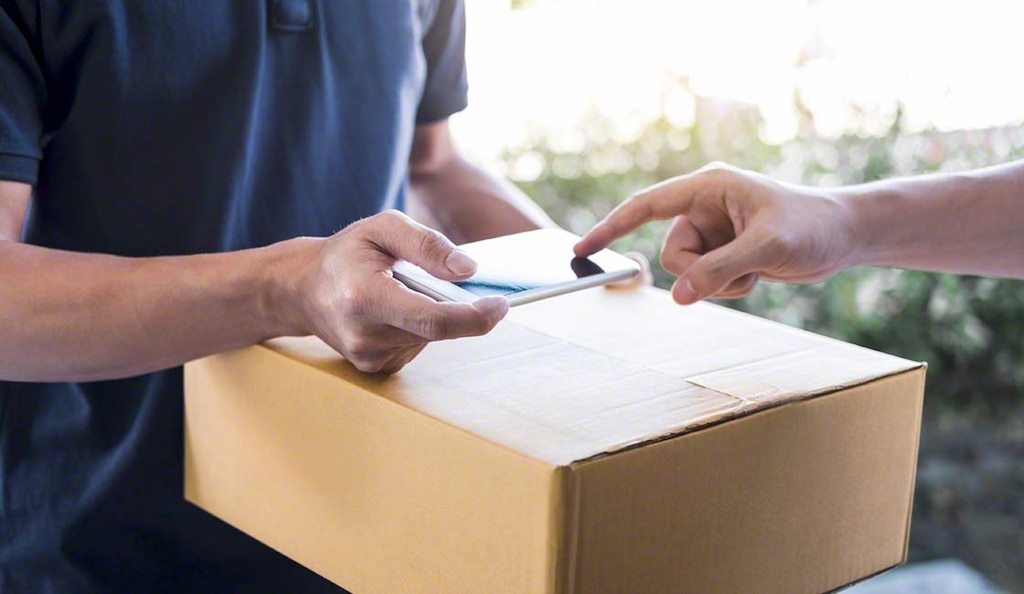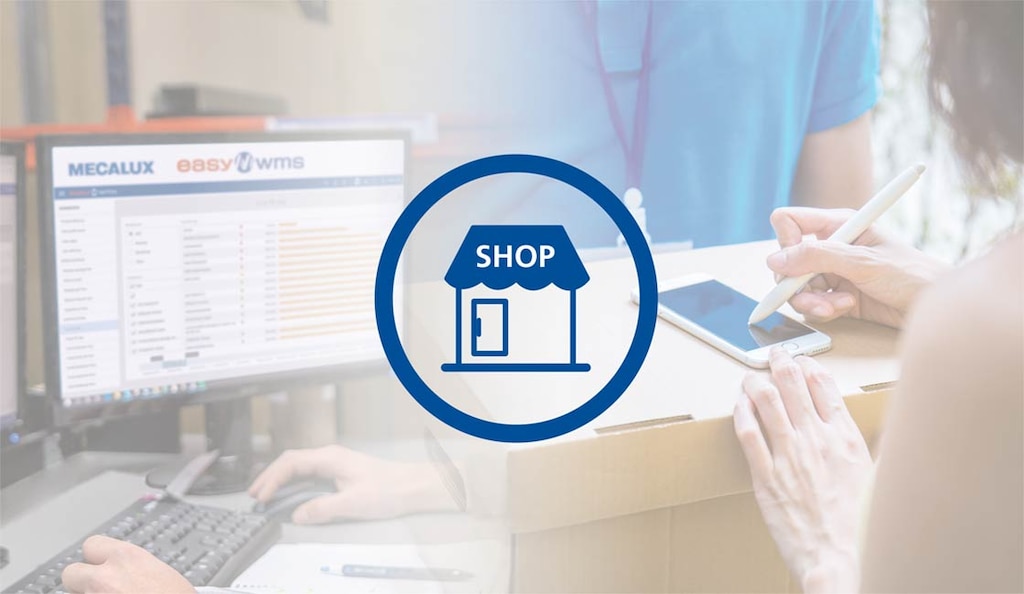
Ship from store: turn your shop into a small distribution center
Ship from store, also known as in store fulfillment, is a logistics strategy derived from the omnichannel phenomenon. Omnichannel retail has caused companies, especially retailers, to centralize all their inventory to ensure flexible logistics operations and, in this way, be able to distribute their online orders from any facility, center, or physical store.
Since our goal is to stimulate sales and satisfy customers, a ship-from-store strategy could come in handy. This is especially true when a product is out of stock in the warehouse but in stock at a store or when you need to speed up the shipment of certain orders. But how can you convert your brick-and-mortar store into a small distribution center? What are the benefits and drawbacks? We’ll tell you all about it in this post.
What is ship from store?
The concept of ship from store is a logistics strategy consisting of sending customer orders from a physical store as opposed to a distribution center. Until ship from store came along, all logistics operations relating to the shipment of e-commerce orders were carried out from a warehouse equipped and prepared to store and dispatch a large number of orders.
It’s undeniable that a distribution center offers significant logistics benefits, particularly in terms of stock management and storage capacity. But, at the same time, deliveries aren’t as quick as when the product is dispatched a mile or two away from the customer.
With the consolidation of omnichannel retail and the need to fulfill the user’s purchasing experience with a view to ramping up sales volumes, businesses began exploring the possibility of distributing orders directly from brick-and-mortar stores. This would bring two major advantages that are crucial in omnichannel retail: on the one hand, increased availability of stock, and on the other, reduced delivery times.

Ship from store: benefits
There is much to be gained by adapting your physical store and turning it into a small distribution center:
- Elimination of stockouts. Ship from store increases stock availability by adding warehouse stock to that of the store. Hence, you’re more unlikely to experience a stockout, which would involve not only the loss of the sale, but also damage to the company’s image in the eyes of the customer.
- Spike in sales. How many times have you not been able to sell a product because it wasn’t available in the warehouse — but it was in the physical store? With ship from store, turnover rises considerably.
- Shorter delivery times. Obviously, if the order is dispatched directly from a location closer to the end customer, delivery times will be notably reduced.
- Better responsiveness. The stores and warehouses will work hand in hand towards the same objective. This means the company’s logistics systems will be more prepared to comfortably absorb a sudden rise in demand. If a facility is overloaded, another warehouse or store will step in.
- Improved customer satisfaction. Users will have a more extensive catalog of products, which will prevent them from resorting to the competition. Likewise, they’ll receive their orders much more quickly. This is fundamental for digital customers, who’ve become used to immediacy.
- Logistics scalability and adaptability. Logistics operations won’t be affected by business growth, as they’ll efficiently handle changes and the needs of a continuously changing market.
In short, employing a ship-from-store strategy will let you deliver your products from the closest physical store, reducing delivery times, boosting sales, and improving customer satisfaction.

Ship from store: challenges and disadvantages
It’s clear that adopting a ship-from-store strategy has its plus points. But it also has some catches or drawbacks that every company should take into account:
- Space optimization. Any brick-and-mortar store has certain space limitations. Therefore, it’s extremely important to make the most of the shop’s small storage space to be able to manage a higher number of products.
- Digital vs. physical customers. In the event that the merchandise in the store also appears as being in stock on the website, an offline customer might purchase a product at the same time a user is doing so in the online store. Rules must be established to avoid this type of overlap.
- Packaging management. Packaging operations are more complicated than they seem. Besides requiring space for storing the boxes, the store needs to have all the packaging material necessary to dispatch a product in the shortest time possible. These include consumables, filling and protection systems, etc.
- Personnel training. Dealing with customers face-to-face in a physical store requires a different skill set than preparing and managing orders. Employees will have to be trained to take on these new tasks, and you might have to designate specific staff to these functions.
- Inventory synchronization. Stock in the warehouse needs to be synced with that of the brick-and-mortar store and vice versa. To do this, it’s advisable to implement a warehouse management system such as Easy WMS.
- Logistics service. Brick-and-mortar stores are normally equipped to receive logistics operators and the goods they sell. With ship from store, the physical store should be equipped with an efficient logistics service provider that picks up in the store all the orders sold online that have to be distributed to customers.
Taking orders made up of products purchased online and sending them from a physical store isn’t as simple as it sounds. In the end, a company can decide to work with one logistics strategy or another. But if it stops being effective or no longer meets expectations, it will end up being counterproductive for the business.
Technology for adopting a ship-from-store strategy
The goal for an effective ship-from-store strategy is for all orders that enter the system to be prepared either from the center or the physical store. To do so, it’s essential to sync both inventories by means of software.
Easy WMS from Interlake Mecalux features the Store Fulfillment module, which integrates the WMS in the facility with the terminals at the points of sale. This module controls the inventory in the warehouse and brick-and-mortar stores in real time, in addition to syncing picking, replenishment, transfers between stores, and returns.
Additionally, to manage the online store, Easy WMS offers the Marketplaces & Ecommerce Platforms Integration module, which integrates the WMS with the main marketplaces and e-commerce platforms in the market (Amazon, eBay, and PrestaShop, among others). Lastly, to streamline last-mile delivery management, Easy WMS’s Multi Carrier Shipping Software module simplifies the relationship of the warehouse with the various transportation agencies. It is tasked with organizing order packaging, printing a delivery note for each exit order, creating labels for carriers, and generating tracking numbers so that customers can monitor their orders.

Meeting omnichannel challenges effectively
Consolidating your inventory across all your facilities and physical stores is the first step towards an efficient omnichannel strategy. That’s why many retailers are adapting and modernizing their logistics strategy in order to turn their physical stores into small distribution centers.
Ship from store will prevent you from losing sales and customers while slashing delivery times and improving customer satisfaction. All of that will make your supply chain more flexible, competitive, and capable of responding deftly to demand volatility. Ready to sync your facility with your physical stores to face the challenges of e-commerce and build customer loyalty? Don’t hesitate to contact Interlake Mecalux. We have the logistics solution that will best adapt to your needs.
